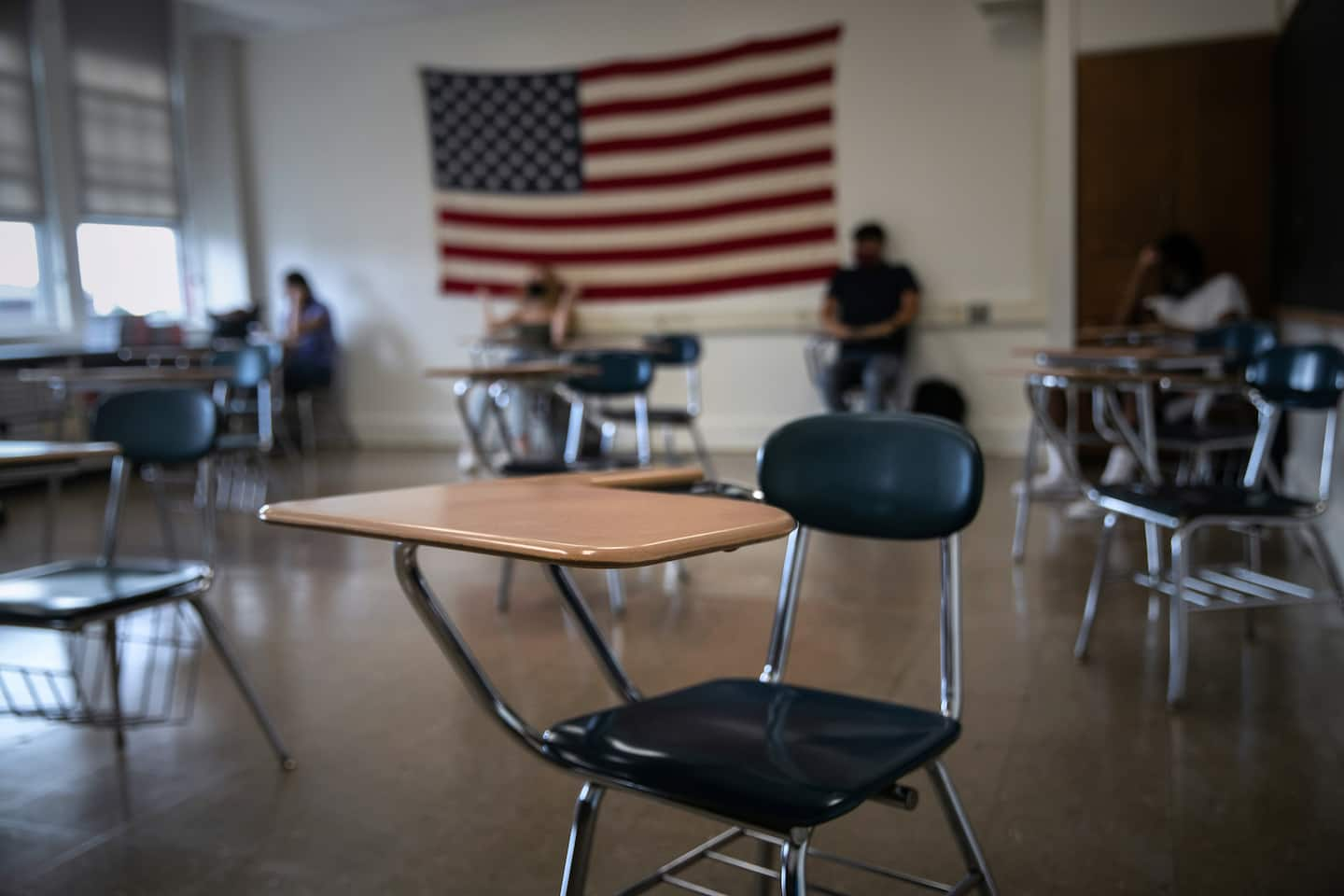Why three feet of social distancing should be enough in schools

Six feet should be the default minimum for adults, but it’s past time we recognize that kids are different and the importance of schools is different, especially for the youngest learners. Three feet should be the default distance for schools.
First, decisions about physical distancing must factor in risks beyond covid-19. The severe harms of keeping kids out of school have been known for some time, such as loss in literacy, missed meals (including more than a billion this spring), virtual dropouts and increasing inequity — all of which hit low-income children the hardest because their parents often lack flexible work schedules to care for them at home.
Second, strict six-foot distancing rules that force schools into “hybrid” models, in which students rotate days at school, might actually increase community risk, as our colleague William Hanage warned in August. The reason is that kids are not always fully isolated at home; instead, they are likely to have an even wider network of contacts, increasing the chances of the virus entering schools.
Third, six feet is not a magical cutoff. It has a weak scientific basis, coming from a fundamental misunderstanding going back decades that the tiny droplets we exhale when we breathe and talk will fall to the ground within six feet. The reality is that while some large droplets do fall out of the air, most are tiny and will stay aloft for an hour or more — traveling well beyond six feet. There is no bright-line cutoff.
Fourth, without such cutoffs, we have to turn to the science to understand risk in context. A recent evaluation of 172 studies from 16 countries found a significant reduction in risk with distancing of at least three feet, but no additional benefit at six feet so long as baseline risk is low enough. There is no question risk is higher at close range, but where community spread is low, three feet of physical distancing should suffice.
Fifth, distancing must be evaluated in the context of other controls in place. The six-foot rule was declared in March, before widespread mask mandates. Now, masks are our best friend — even at three feet. Consider what happens when everyone wears masks that are 70 percent efficient at filtering particles (typical of two- and three-layer masks). Because a virus must pass through two of these masks to move from one person to another, they have a combined removal efficiency of 91 percent.
That leads us to the last — and perhaps most critical — point: A room with 25 adults is different from a room with one adult and 24 kids. Kids are less likely to catch this virus than adults (especially children younger than 10), and if they do, the fatality rate is extraordinarily low. (There is also evidence that kids transmit less, although this is not completely settled.) Remember, these are joint probabilities. The infection fatality rate for kids is very low (3 per 100,000), but they have to get it first. That means the likelihood of any kid dying from covid-19 is even lower. In fact, the Centers for Disease Control and Prevention shows that excess mortality this year for those younger than 25 is 2 percent below average compared with the past four years.
The critical question, then, is: How do we protect teachers?
Teachers should continue to distance six feet from students as much as possible, limit adult-to-adult interaction and wear better masks (a three-layer mask is very effective in these lower-risk settings). While transient, close-range interactions are bound to happen in a classroom, these are lower risk due to their short duration and masking.
Classrooms should also set a target of four to six air changes per hour, achieved through any combination of filtration and ventilation. This is especially important for times when masks are off, such as during lunch — even if it means keeping windows open a few inches during the winter.
As cases rise in the United States, we should acknowledge that there will be cases in schools. There is no zero risk. We should also be prepared to adapt our strategies accordingly. If cases rise quickly in a region, schools should not automatically close; rather, the level of controls should increase. That might mean the six-foot rule could come back for high schools, while the three-foot rules remains for younger grades. If high levels of community spread emerge and school closures become warranted, high schools should close first, then middle schools. Elementary schools should close last, if at all. Most important, schools should be prioritized over bars and restaurants.
The risks from covid-19 in schools are manageable. The risks to kids being out of school, however, are escalating rapidly. For the sake of our children, it’s time for more scientifically justified distancing guidelines in the classroom.
Read more:






